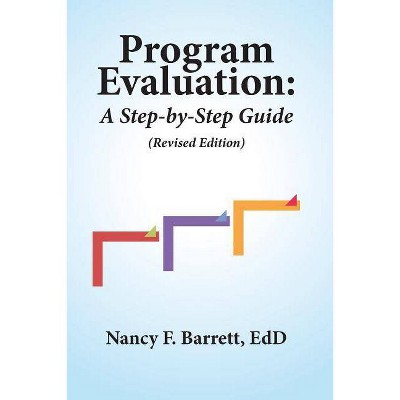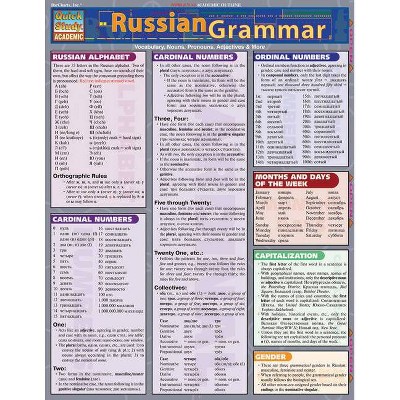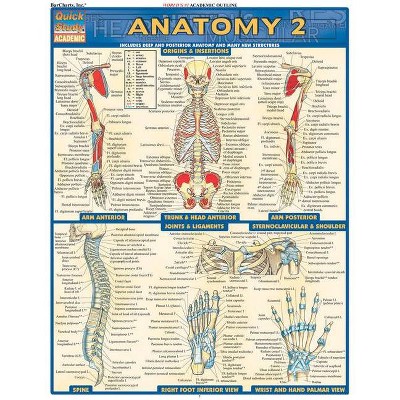IBM SPSS for Introductory Statistics - 5th Edition by George A Morgan & Nancy L Leech & Gene W Gloeckner & Karen C Barrett (Paperback)

Similar Products
Products of same category from the store
AllProduct info
<p/><br></br><p><b> About the Book </b></p></br></br>This accessible book provides a unique integration of the research process and the use and interpretation of statistics using SPSS version 20. Readers learn to choose the appropriate statistic based on the research design and interpret and write about output. Helpful tools are provided: the key SPSS windows needed to perform the analyses; output with call-outs to highlight key points; interpretation sections to help readers better understand the output; lab assignments organized the way one proceeds when doing a research project; and many flowcharts and tables. Data sets and SPSS syntax, referred to in the book, are available on-line. This book can also be used with other versions of SPSS.<p/><br></br><p><b> Book Synopsis </b></p></br></br><p>Designed to help students analyze and interpret research data using IBM SPSS, this user-friendly book, written in easy-to-understand language, shows readers how to choose the appropriate statistic based on the design, and to interpret outputs appropriately. The authors prepare readers for all of the steps in the research process: design, entering and checking data, testing assumptions, assessing reliability and validity, computing descriptive and inferential parametric and nonparametric statistics, and writing about outputs. Dialog windows and SPSS syntax, along with the output, are provided. Three realistic data sets, available on the Internet, are used to solve the chapter problems.</p><p>The new edition features: </p><ul> <p> </p> <li>Updated to IBM SPSS version 20 but the book can also be used with older and newer versions of SPSS. </li> <li>A new chapter (7) including an introduction to Cronbach's alpha and factor analysis.</li> <li>Updated Web Resources with PowerPoint slides, additional activities/suggestions, and the answers to even-numbered interpretation questions for the instructors, and chapter study guides and outlines and extra SPSS problems for the students. The web resource is located www.routledge.com/9781848729827 .</li> <li>Students, instructors, and individual purchasers can access the data files to accompany the book at www.routledge.com/9781848729827 .</li> </ul><p>IBM SPSS for Introductory Statistics, Fifth Edition provides helpful teaching tools: </p><ul> <p> </p> <li>All of the key IBM SPSS windows needed to perform the analyses.</li> <li>Complete outputs with call-out boxes to highlight key points.</li> <li>Flowcharts and tables to help select appropriate statistics and interpret effect sizes.</li> <li>Interpretation sections and questions help students better understand and interpret the output. </li> <li>Assignments organized the way students proceed when they conduct a research project.</li> <li>Examples of how to write about outputs and make tables in APA format.</li> <li>Helpful appendices on how to get started with SPSS and write research questions. </li> </ul><p>An ideal supplement for courses in either statistics, research methods, or any course in which SPSS is used, such as in departments of psychology, education, and other social and health sciences. This book is also appreciated by researchers interested in using SPSS for their data analysis.</p><p/><br></br><p><b> Review Quotes </b></p></br></br><br><p><em>This book is an excellent resource for both students and faculty. It provides an up to date, step by step guide outlining which statistical analysis to use, how to run specific tests in SPSS, and most important how to interpret and report the results." -</em> <strong>Randall Davies, Brigham Young University, USA</strong></p><p><em>"This textbook not only provides a comprehensive overview of how to use SPSS to calculate inferential statistics, but it also provides illustrative tutorials on how to read and interpret the outputs generated by the software." -</em> <strong>Janelle L. Gagnon, Mount Holyoke College, USA</strong></p><p><strong></strong><em>This is not your usual SPSS guidebook! The text guides the reader through the research process from research question, to choice of appropriate statistics, to running SPSS, to interpretation of the SPSS output, and finally to writing up results. It should be very useful to applied researchers. -</em> <strong>Richard Lomax, The Ohio State University, USA</strong></p><p><em>"This clearly written and effectively illustrated book allows statistics instructors to concentrate on facilitating students' conceptual understanding and problem solving skills. This book excels in helping students informatively distinguish among and select appropriate analyses, and interpret the oft times voluminous results of those analyses." -</em> <strong>Michael F. Cassidy, Marymount University, USA</strong></p><p><em>Through detailed examples, clear and precise terminology, and raising awareness of potential pitfalls, this book guides students through the basic questions, assumptions, and choices for statistically informed research. Teachers and students alike will find that this book is much more than a manual on how-to-do basic statistical analysis using SPSS but an exploration on the task and goals of research.</em> - <strong>Elias Ortega-Aponte, Drew University, USA</strong></p><br><p/><br></br><p><b> About the Author </b></p></br></br><p><strong>George A. Morgan</strong> is Emeritus Professor of Education and Human Development at Colorado State University. He received his Ph.D. in child development and psychology from Cornell University. In addition to writing textbooks, he has advised many Ph.D. students in education and related fields. He has conducted a program of research on children's motivation to master challenging tasks. </p> <p></p> <p><strong>Nancy L. Leech</strong> is Associate Professor at the University of Colorado, Denver. She received her Ph.D. in education with an emphasis on research and statistics from Colorado State University in 2002. She is currently teaching graduate level courses in research, statistics, and measurement. Her area of research is promoting new developments and better understandings in applied, quantitative, qualitative and mixed methodologies.</p> <p><strong>Gene W. Gloeckner</strong> is Professor and chair of the research methods specialization in Education at Colorado State University. He received his Ph.D. from Ohio State University. Much of his writing and teaching has focus on issues in quantitative, qualitative, and mixed research methods. He has advised or served as methodologist on over 50 Ph.D. committees.</p> <p><strong>Karen C. Barrett</strong> is Professor and Assistant Department Head of Human Development and Family Studies at Colorado State University where she teaches graduate research methods and statistics. She received her Ph.D. in developmental psychology from the University of Denver. Her research regards emotion regulation and its influence on development; the development of social emotions such as guilt and shame; and family and cultural influences on emotions. </p>
Price History
Cheapest price in the interval: 59.95 on June 9, 2021
Most expensive price in the interval: 59.95 on February 4, 2022
Price Archive shows prices from various stores, lets you see history and find the cheapest. There is no actual sale on the website. For all support, inquiry and suggestion messages communication@pricearchive.us




















